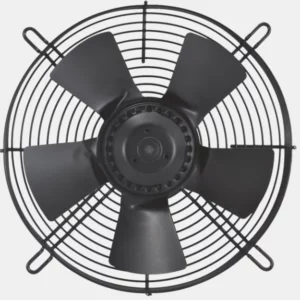When it comes to industrial fans, you’ll always have a choice among several options. But when selecting fans for a variety of industries — including those for use in mines, factories, and commercial buildings — two of the most popular types are axial and radial.
Not only are axial and radial fans the most applicable across a broad range of industries, but they’re also the two most common types of fans available today on the market.
Industrial Fans: Understanding The Difference Between Axial and Radial Fan
So what type of fan — axial or radial — is better for your application? Neither is a bad choice, but there are situations when one should be selected over the other. Hence, choosing the right type of fan often comes down to factors such as air displacement, volume, and even blade type. This post will take a closer look at the basics, key differences, and advantages and disadvantages of both axial and radial fans.
Axial Fans
If you’ve ever lived in a home without air conditioning or slept in a loft that required a bit more air circulation to promote a comfortable environment, the portable fan that you set up to help cool the area is likely an axial fan.
Axial fans got their name for the way the fan blades operate — rotating around an axis and thereby pushing air out in a way that’s parallel to the axis. The example that we used above is common in household and small industrial settings. However, axial fans can be made much larger, suitable for factories and underground mining operations.
Axial fans are frequently used when there’s a need for a large volume of air. Though axial fans do a nice job achieving this goal, it’s fairly low-pressure air and not highly concentrated to a certain area.
Radial Fans
Also known as “centrifugal fans,” radial fans don’t pull air parallel to the axis as axial fans do. Instead, they move air from the center, radially — hence their name. To create the air, radial fans first pull it into the fan. This is often done via a side intake, which varies based on how the size of the fan.
A simple example of a centrifugal fan is a small “blower” fan, used in residential and commercial environments to quickly dry damp areas of the building or areas with water damage.
Though the volume of these types of fans is usually less than that of axial fans, the pressure is much greater. They’re also better able to directly target a specific area. Radial fans used in heavy industrial and mining environments are typically larger, drawing in the air via intakes and then running it through a series of ducts before it is dispersed.
Centrifugal fans may also be known as squirrel fans, squirrel cage fans, and air blower fans because of how they operate and how certain models look.
